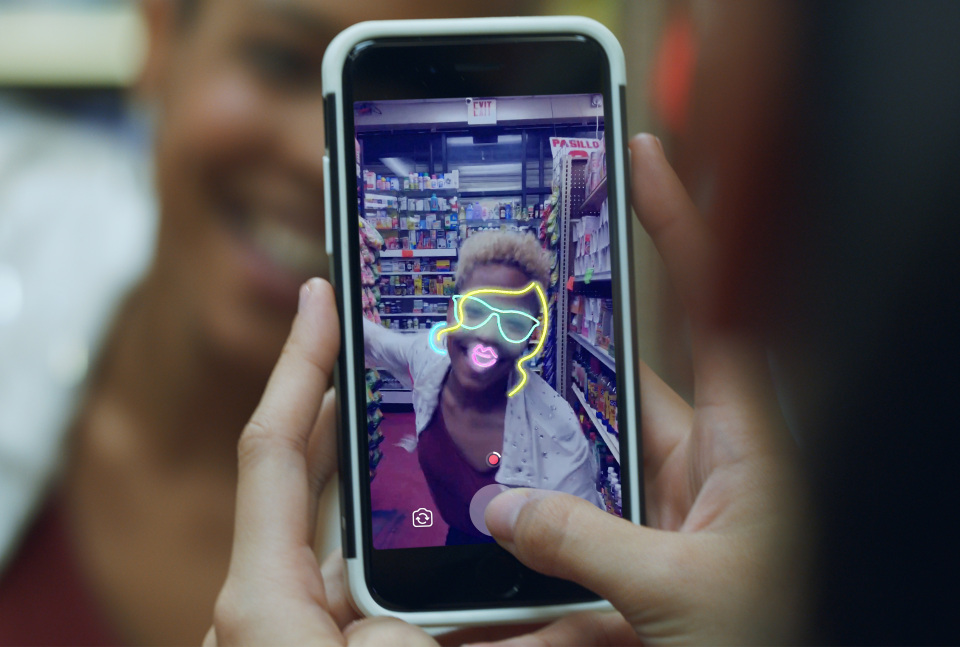Forget taking that boring photo of your lunch and posting it online—now you can animate it, draw on it and cover it with stickers, too. Yes, social media updates are going well beyond the filter to become “Stories”—disappearing messages that transform everyday situations into playful forms of communication. Pioneered by Snapchat but adopted by Instagram and its parent company, Facebook, Stories tap into the fear of missing out (FOMO) while allowing both users and brands a way to be more creative with social sharing. All three networks have their own version of Stories, but let’s take a look at what sets them apart.
Snapchat
While messages sent in Snapchat are automatically deleted after viewing, Snapchat Stories have a slightly longer lifespan of 24 hours. Stories originated on the Snapchat platform and not only taps into the FOMO, but set the standard. A recent Stories update put more control into the user’s hands while offering more lucrative ad formats to brands.
Previously, Auto Advance would play all Snapchat Stories back-to-back with Snap ads in between. Now, Snapchat users can manually select which Stories they wish to view and the updates will be played in that order. If users watch more than one, ads will appear mid-roll, or at the end when viewing just one at a time. And now, in addition to the new 3D experiences with World Lenses that were announced on Tuesday, the company that recently hit IPO is reportedly launching a self-serve platform for Snap ads.
Snapchat users can enhance their Stories with drawings, emoji and augmented reality stickers.
Despite being imitated by Instagram, many young consumers still prefer the original. A study by Survata found that users ages 13-to-34 still prefer Snapchat over Instagram. Sixty-four percent of those surveyed said Snapchat is “cooler,” 67 percent said that Snapchat had better features and if they could only have one app, 51 percent named Snapchat.
February research from SCG, an advertising and public relations agency, surveyed 333 US high school and college students regarding social media usage. Seventy-eight percent of respondents said they use Snapchat on a daily basis, just slightly more than said they use Instagram (76 percent) or Facebook (66 percent) on a daily basis.
While new features are always a plus, young consumers seem to use it for the privacy. A study by Defy Media conducted for Variety found that 30 percent of respondents prefer Snapchat because their “parents don’t use it.” Millennials make up the largest share of Snapchat’s US user base—eMarketer estimates millennial monthly active users (MAUs) of the platform will total 43.9 million in 2017.
Meanwhile, Instagram Stories alone have already reached over 200 million daily active users—exceeding all of Snapchat’s DAU (161 million). As with its Snapchat “inspiration,” Instagram Stories disappear after 24 hours and appear at the top of a user’s feed for easy viewing. Instagram’s Stories autoplay through all updates, however, just as Snapchat once did before the aforementioned update.
Stories are fun for users, but even more valuable to advertisers who gain access to Facebook’s array of measurement tools. The photo-sharing app exceeds 500 million users and shares access to Facebook’s pool of three million advertisers who have the option to extend Facebook ad campaigns to Instagram.
Instagram has just rolled out its own Story enhancements, including the ability to create stickers out of selfies, geostickers and a shortcut to access stickers for when inspiration strikes. A previous update added “see more” capabilities for verified users, as well as the ability to tag other accounts.
Brands were quick to adopt Instagram Stories and aren’t afraid to have a bit of fun with the casual platform.
“Because businesses play such a rich role within our community, we’ve seen they are the profiles that have led the way and really innovated in [the Stories] space,” Jen Ronan, Instagram’s brand development lead, told The Drum. “They’re telling stories of behind the scenes, of the day to day, and really building their brand in that way.”
Facebook is rolling out Stories for Facebook, too, complete with an in-app camera, stickers and “masks” galore.
“The Instagram community has shown us that it can be fun to share things that disappear after a day,” Facebook explained on its blog last month, “so in the main Facebook app we’re also introducing Facebook Stories which lets you share multiple photos and videos as part of a visual collection atop News Feed.”
Facebook’s app may have a long way to go before it rivals even its own Instagram, but the social media giant certainly has the advantage of numbers. Sixty-eight percent of all Facebook traffic comes from a mobile device, offering easy access to the new Stories feature.
Advertisers love Facebook, too—five million active marketers, to be exact. In a survey conducted by Social Fresh, Firebrand Group and Simply Measured, over 95 percent of marketers named Facebook as the best social media platform for ROI.

